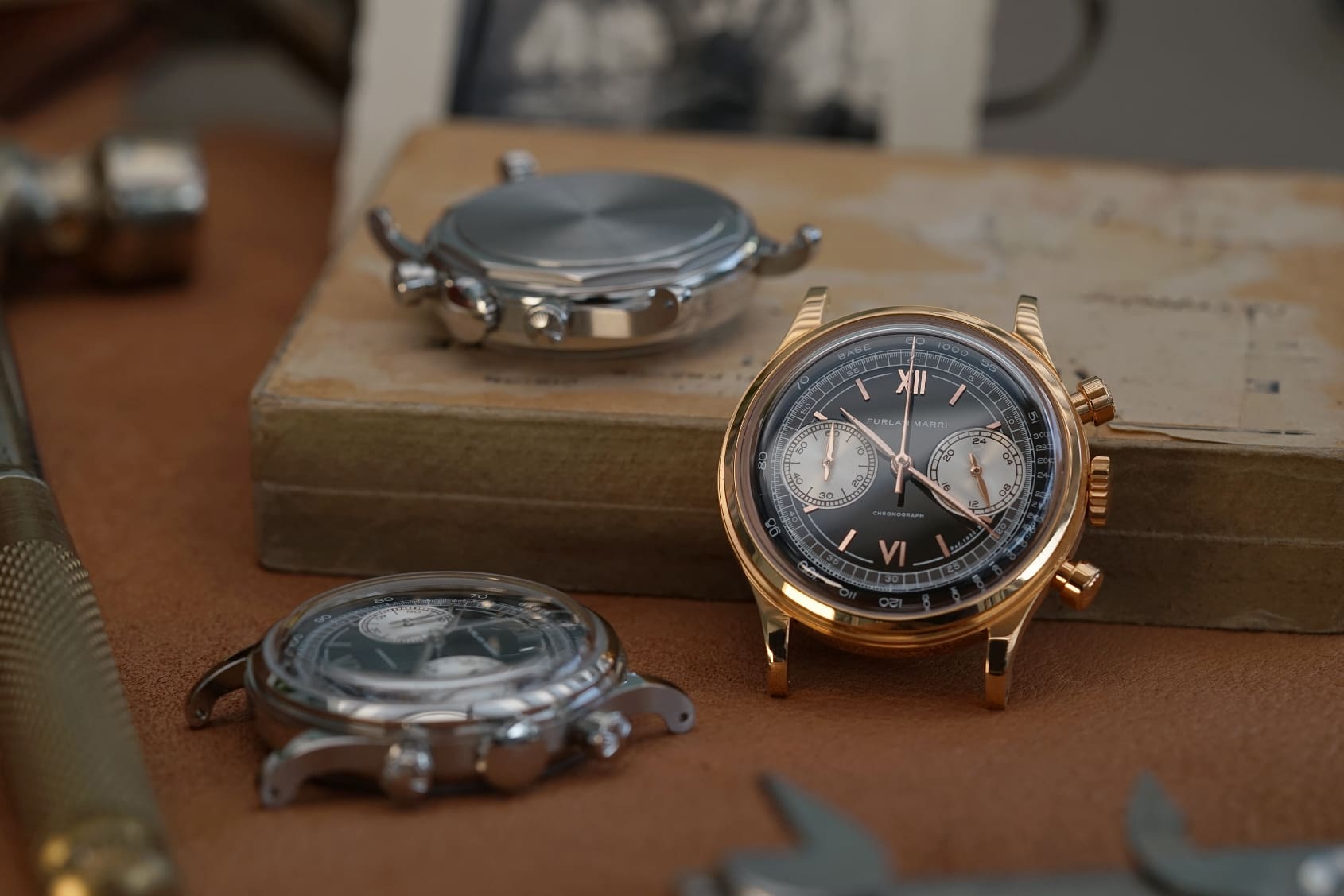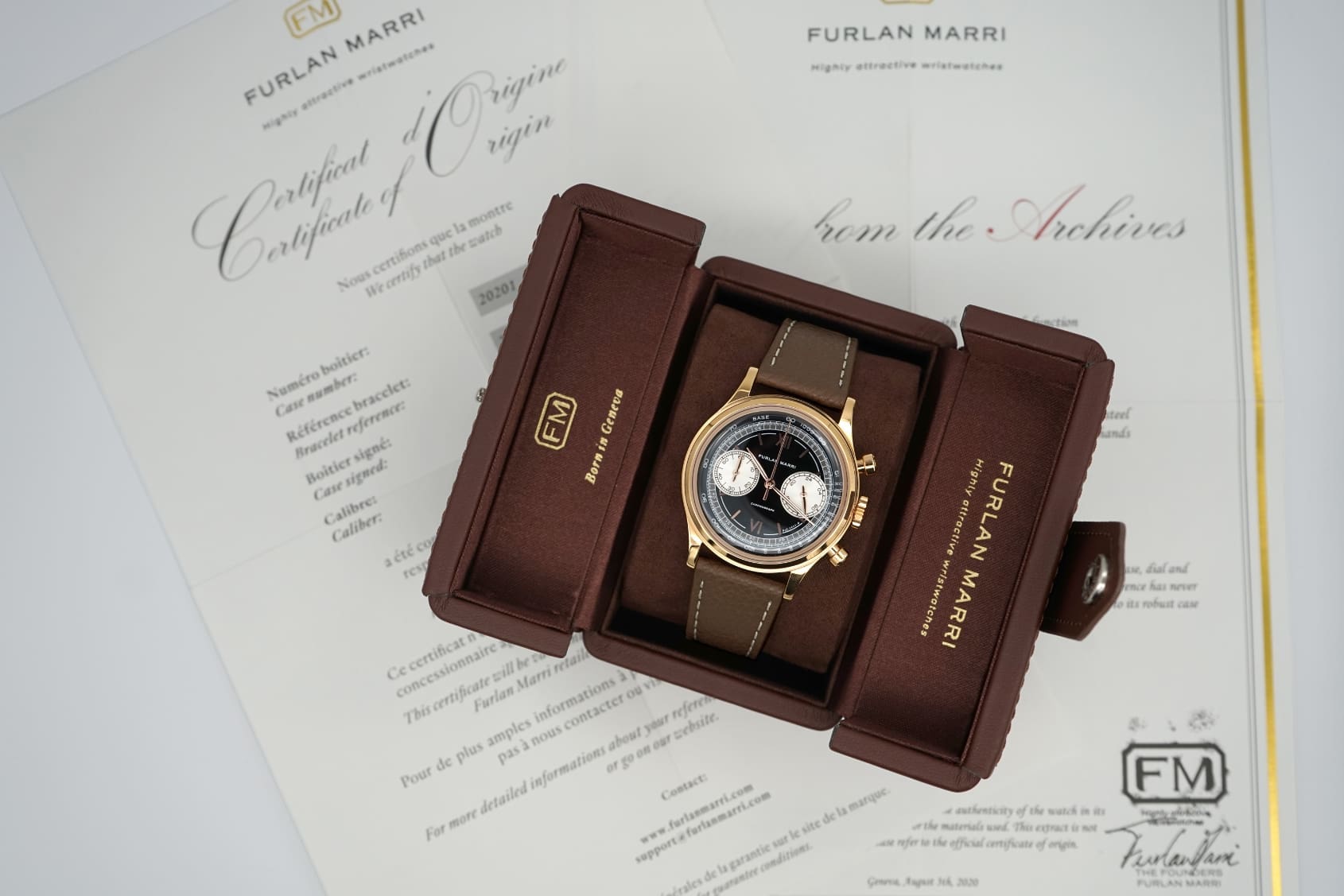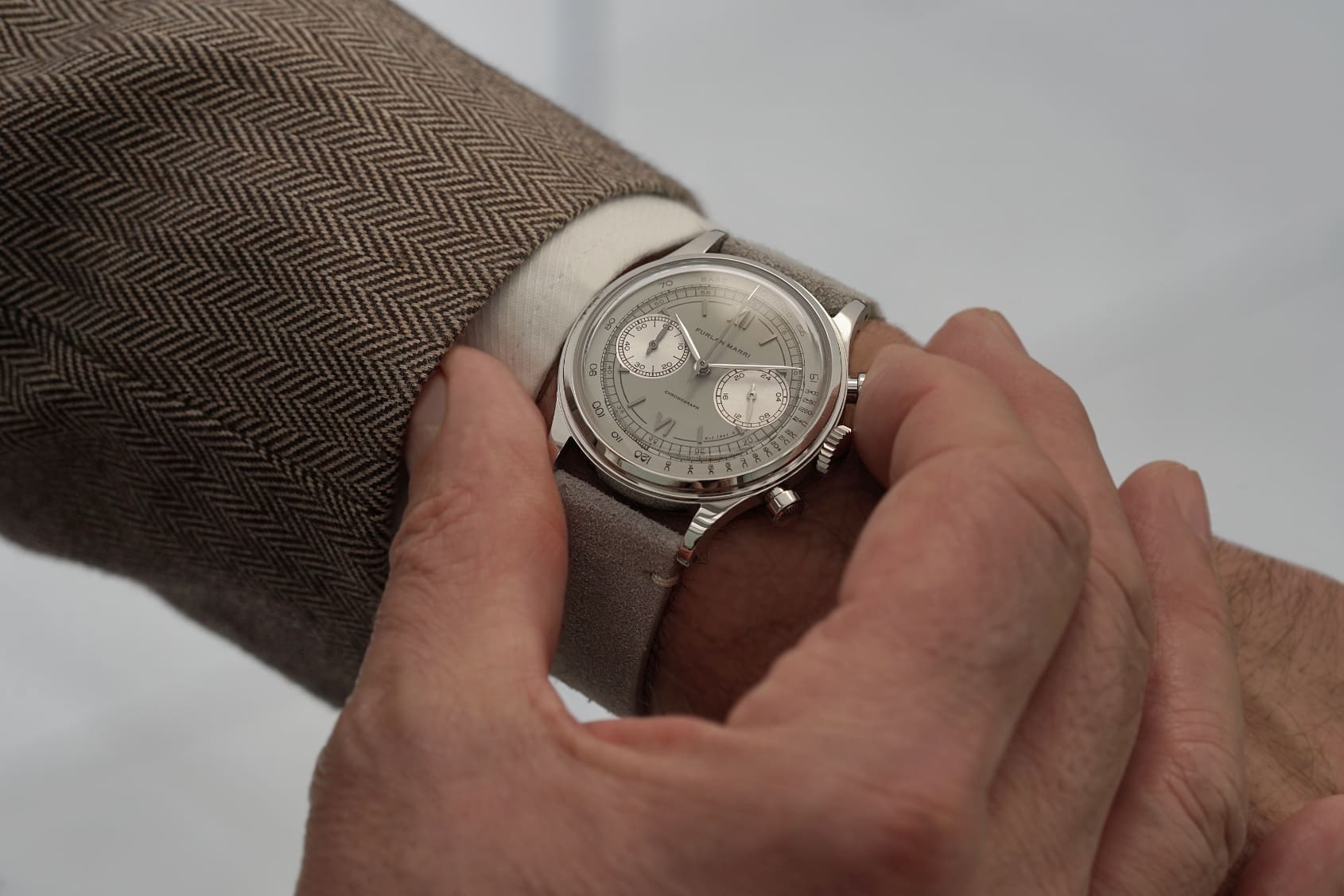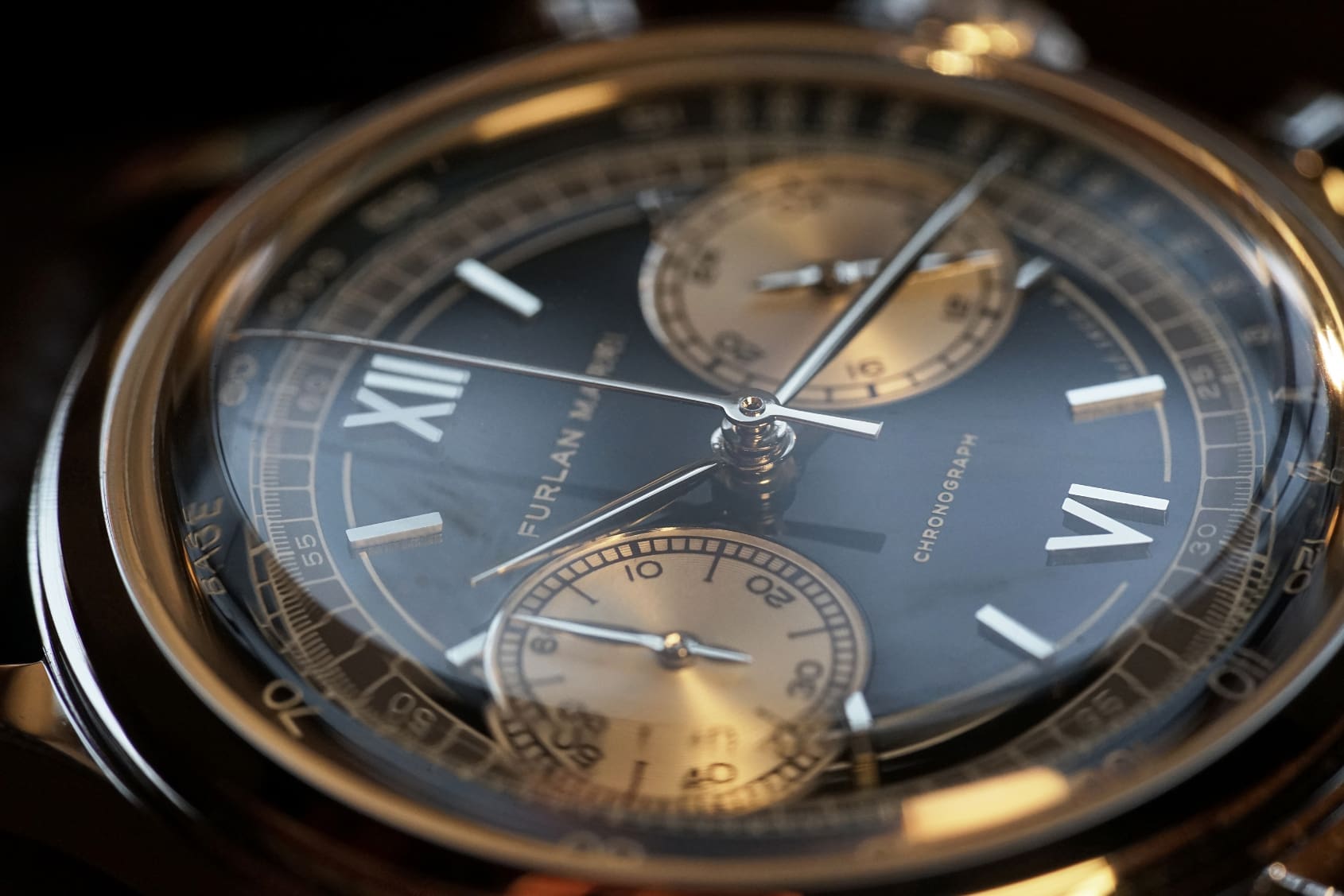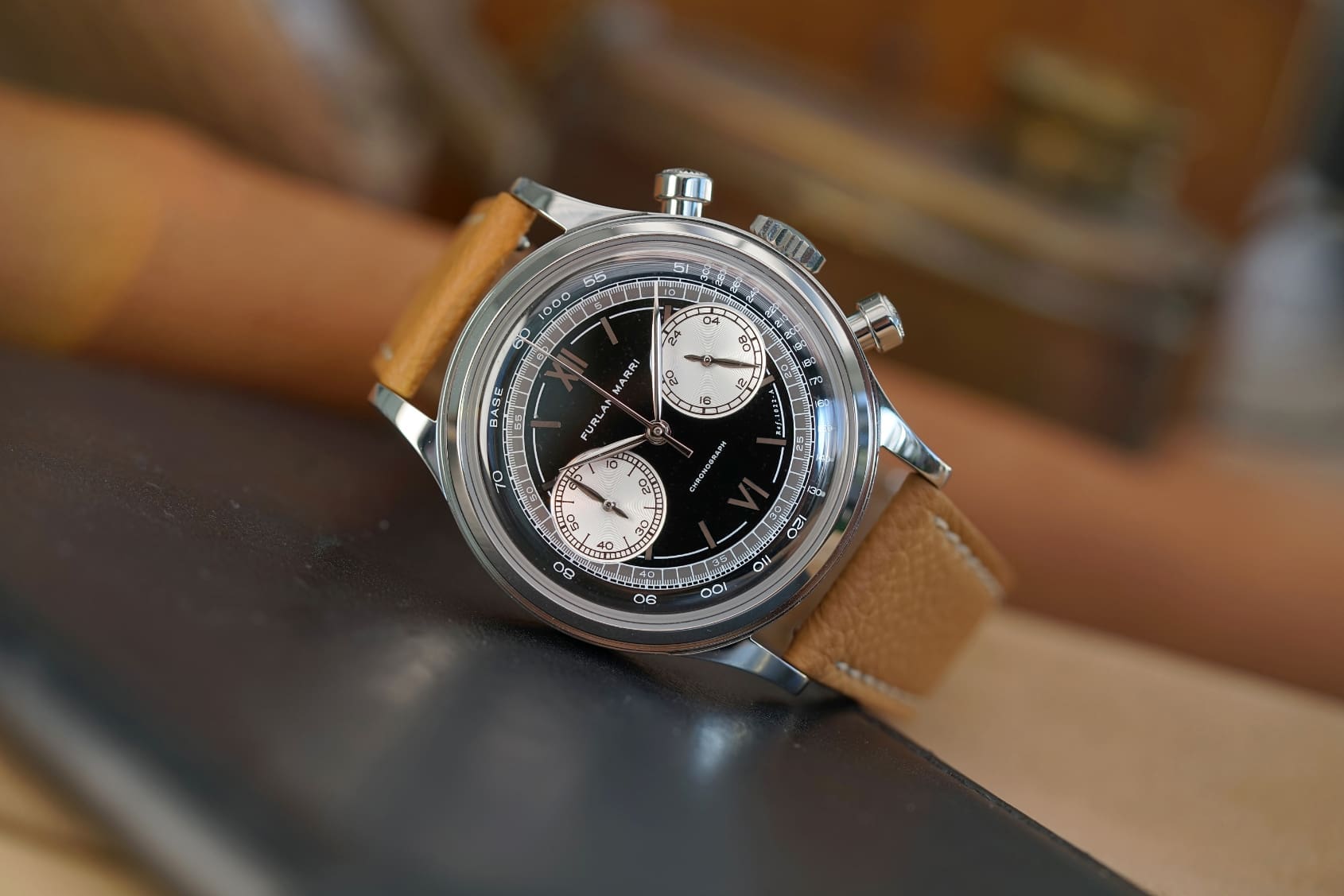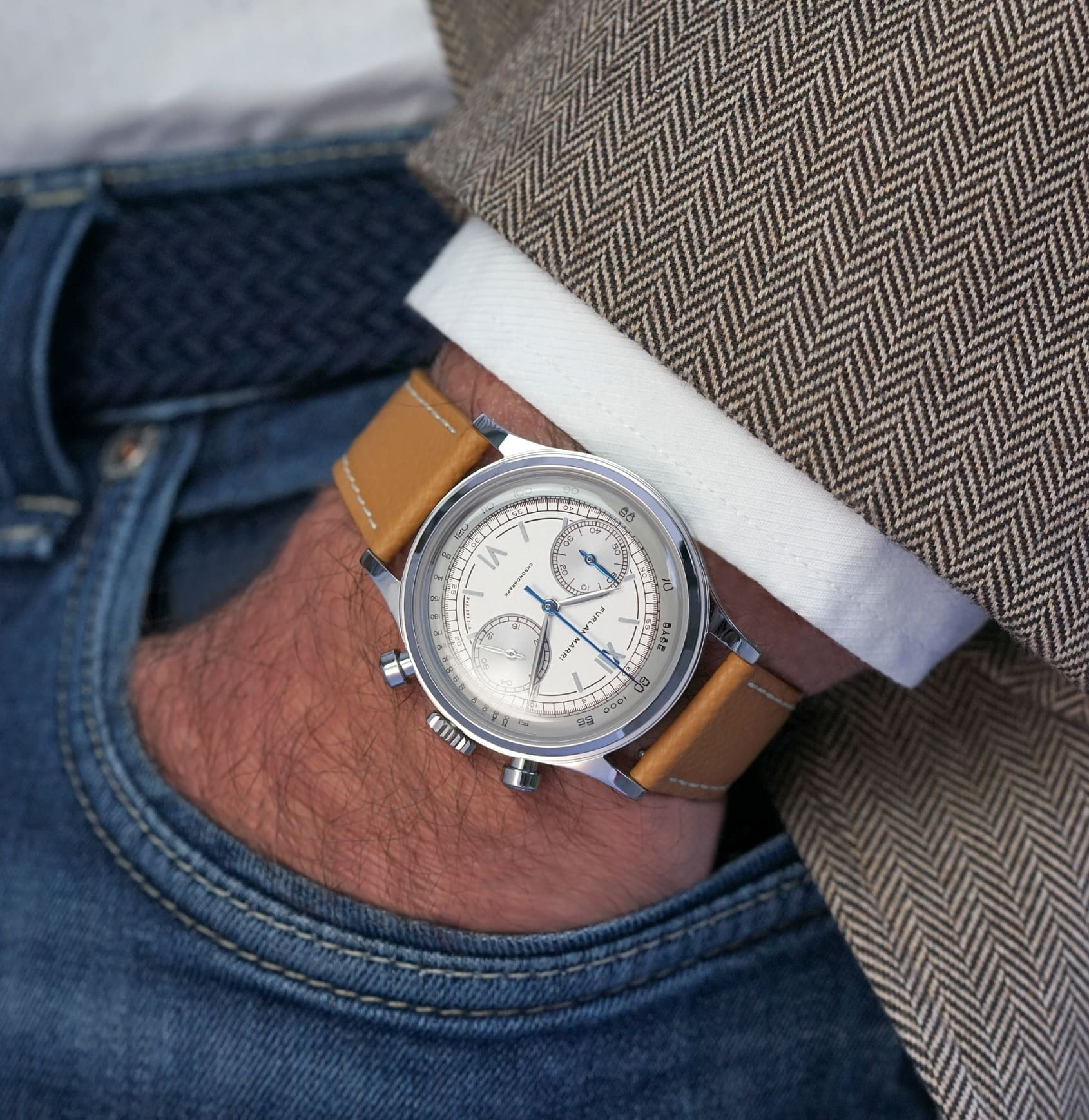How Furlan Marri went from Kickstarter to GPHG winner in seven months
Luke BenedictusWhat did you achieve during the pandemic? For most of us, when we look back at the last couple of years of lockdowns and sabotaged plans, the answer to that question is “precious little”. Unless, of course, you count gaining 5kg, drinking reckless amounts of gin and becoming pathetically addicted to Wordle. Andrea Furlan, however, took a different tack. For the 29-year-old Swiss designer, COVID was a period of frantic overachievement. Alongside his partner, Hamad Al Marri, he created a brand-new watch brand from scratch. But Furlan Marri was hardly your average Kickstarter-funded microbrand. In the space of one year, Andrea and Hamad have enjoyed great critical success that culminated in winning the Horological Revelation Prize at the Grand Prix d’Horlogerie de Geneve. And they did that with a brand that was largely created in Andrea’s bedroom. How on earth did they manage it?
“I don’t even really know the answer as to why things went so fast,” shrugs Andrea over Zoom from his Geneva office. “I was surprised in a seven-month period to have gone from Kickstarter to GPHG. It’s crazy!”
It’s also remarkable given Furlan Marri’s style of watches. Last year, they came out with a range of vintage-inspired, twin-register chronographs that mined the look of revered 1940s pieces like the Patek Philippe “Tasti Tondi” Chronograph Ref. 1463. Truth be told, in an industry where nostalgia is the prevalent design language, there’s hardly a shortage of retro throwbacks. The difference here was Furlan Marri’s impeccable execution.
The Background
Perhaps this isn’t so surprising given that, early in his career, Andrea spent four years working with Dominique Renaud, from Renaud and Papi. For those unfamiliar, Renaud and Papi were two former employees of Audemars Piguet, who in 1986 set up a company making movements. Formidably impressive movements, too. Audemars Piguet bought a controlling interest in them in 1992, but they continued to also make watches on the side for a range of top-tier brands from A.Lange & Söhne to Richard Mille. Many illustrious watchmakers have worked for them along the way, including Bart and Tim Grönefeld, Robert Greubel, Stephen Forsey and Christophe Claret. In short, Renaud and Papi was the ideal school for Andrea to refine his eye for watchmaking detail. But his next step was equally instructive in a different way. Rather than continue down the high-horology route, Andrea packed his bags and went to Asia.
There, Andrea worked as a design consultant for a diverse array of brands. “It was there that I was able to see for my own eyes the process, the production and the shipping process of more mass production,” he explains.
Crucially, he was also able to see how a range of brands tackled e-commerce, namely what strategies worked and what didn’t. He absorbed a ton of first-hand experience that he would later apply to Furlan Marri.
The Vision
In Geneva, Andrea lived next to the first workshop of François Borgel – the legendary casemaker who patented a waterproof case before Rolex did. Borgel’s pioneering work with screw-in cases led to collaborations with the likes of Patek Philippe and Vacheron Constantin, but also more budget-friendly brands like Mido and Movado.
Andrea and his friend Hamad, an artist and watch collector, began to daydream about what it would be like to collaborate with the horological greats of yesteryear like Borgel. “We started to wonder: what would Furlan Marri be like if we could meet those watch case makers, those button makers, those craftsmen from the past and do a project with them, using modern machines. What would we do?”
More specifically, the duo wanted to democratise fine watchmaking by creating an accessibly priced product that was informed by the past. For their debut collection, they set out to make a watch with a case influenced by Borgel, but that moved the conversation on in a fresh direction.
They decided to use a mecha quartz movement because they felt it had become a forgotten part of the Swiss watch industry. This type of movement was created by Frédéric Piguet and Jaeger-LeCoultre in the 1980s and involved adding a mechanical component to a standard quartz chronograph. “It’s important to remember that even big brands had quartz movement,” says Andrea.
Going for mecha quartz would also enable them to keep costs low. But Andrea was adamant that the brand’s commitment to accessible pricing wouldn’t compromise the quality of their product. “Our motto is: ‘crafted with care, and designed for detail’,” he explains. “We put so much into the product, even on parts you don’t see like inside the case and caseback.”
The Market Research
When Furlan Marri’s first prototypes were completed, they sent them to key members of the watch media and a handful of noted collectors to get their opinions on the watches. “I told them: ‘Speak freely. I just need an honest critique of the project’,” Andrea recalls. “But they spoke in a really good way and expressed surprise about the details and quality of the finish. Then they spoke to other people…”
These prototype watches soon made their way onto the Instagram accounts of some of the world’s most influential watch accounts from @italianwatchspotter to @patekaholic. Word began to spread about their work and eyebrows were duly raised at the prices, too, with Furlan Marri’s watches starting from $330 USD
When their Kickstarter campaign began, they met their CHF75,000 ($110,400 AUD) target in under 60 seconds. Eventually they would exceed their goal 14 times over.
The COVID Effect
Andrea also credits the pandemic for accelerating the brand’s remarkable growth. In Asia, he had found E-commerce much more established and accepted. But COVID forced wider use and acceptance of the practice in Switzerland. “It speeded up the process,” Andrea says.
The lack of distractions during the lockdown also gave Andrea a chance to truly focus on his nascent brand. Working out of his parent’s apartment, he designed the watches and converted his bedroom into a photographic studio in order to shoot them for marketing purposes. “I did all the projects during COVID in my bedroom, with Hamad in his apartment in Dubai.”
The success that Furlan Marri achieved isn’t just demonstrated by the GPHG prize. It’s clear through their watches now appearing on the secondary market for vastly inflated sums (the Furlan Marri Havana Salmon 1022-A, for example, is currently selling on Chrono 24 for $5,362 AUD). Their cult following is evident from the fact that Andrea recently got sent a photo from a fan of the brand, who’s so enamoured that he even had a Furlan Marri birthday cake. “It’s incredible to see that,” Andrea admits.
Next up, Andrea and Hamad are creating a piece with a Swiss automatic movement and also working on a mystery collaboration with a “legendary watchmaker”. Having achieved so much. so fast, it’ll be fascinating to see what the pair come up with next.





